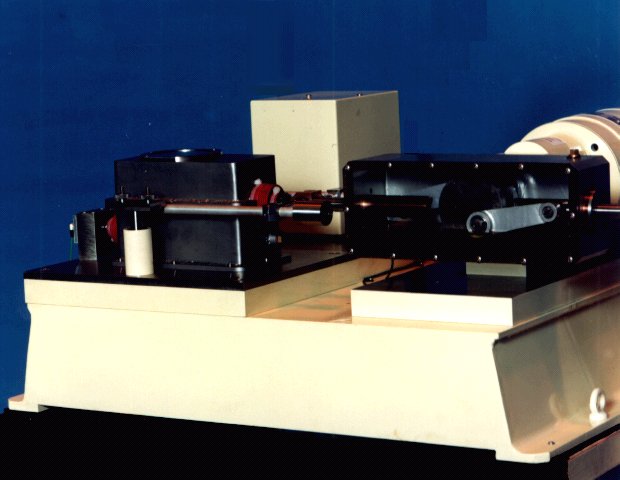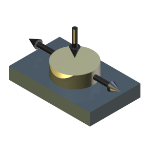-


Description
This machine is a mechanically modified version of the TE 77 High Frequency Friction Machine, modified to run at lower loads (2 to 50 N) and a longer stroke (50mm). It also incorporates a wear transducer and a sealed chamber for controlled environment tests (for example with low levels of water vapour).
The control and data acquisition system and the control features are all the same as the full specification TE 77.
The peak sliding velocity achieved is 3.93 m/s (25 Hz at 50 mm stroke) and this demands that a full balance of the reciprocating masses is provided.
The arm holding the specimen is pivoted in line with the specimen contact in order to decouple driving forces which would affect the specimen loading
The drive motor is connected to a crank and con-rod mechanism running in an oil-filled chamber. This mechanism gives rise to a slight deviation from a purely sinusoidal motion. Full balancing is achieved by an identical con-rod driving a contra-reciprocating shaft, to which different weights are added to compensate for different specimens.
The method of varying sliding speed is to alter the motor speed, giving a 20:1 turn-down ratio.
The load is applied through a lever and yoke, similar to the standard machine, and transferred to the specimen by means of the roller bearing and “C” shape specimen carrier. This arrangement means that the load is always normal to the plate surface. The loading actuator comprises a servo motor in-line with a calibrated 50N spring and a separate balance spring. The load control loop is closed by using a strain gauge transducer mounted directly beneath the sliding test piece.
The environmental chamber is sealed where the reciprocating arm, heaters and transducer link pass through.
The wear transducer system uses the capacitive gap transducer, but inverted from the standard arrangement; the transducer is mounted on the plate holder and looks at a target on the moving specimen carrier.
Control and Data Acquisition
The TE 102 has PC based sequence programmable control and data acquisition. This is provided by an integrated Serial Link Interface Module and COMPEND 2000 software running on a host PC, operating under Windows. Data is stored to hard disc in standard spread sheet compatible file formats (.csv or .tsv).
Tests are defined by a sequence of steps, each step containing set-point, data recording rates and alarm level information. Set-points may be adjusted by step change or ramp. The test sequence is followed unless interrupted by the operator or an alarm. Set-points may also be adjusted manually using on screen toggles.
-
Technical Specifications
Contact Configurations: Area Contact Load Range: 2.5 to 50 N Temperature Range: Ambient to 250°C Heating Power: 400 W Temperature Sensor: k-type thermocouple Frequency Range: 2.5 to 25 Hz Stroke: 50 mm Friction Transducer: Piezo-Electric Type Force Range: – 500 to 500 N Plate Specimen: 86 mm x 25 mm x 4 mm thick Area Contact: 18 mm diameter hemishpere made from test material Interface: SLIM 2000 Serial Link Interface Module Software: COMPEND 2000 Motor: 0.55 kW ac vector Controlled Parameters Frequency Load Temperature Test Duration Measured Parameters Load Friction Temperature Frequency Wear Friction Coefficient Services Electricity: 220/240V, single phase, 50 Hz, 3.2 kW 110/120V, single phase, 60 Hz, 3.2 kW -
Applications
compressor materials dry contact conditions dynamic friction humid conditions hydrogen environment reciprocating seals self-lubricating materials -
Publications
-
User List
Launched 2002
Not disclosed
-
Download the Machine Leaflet

